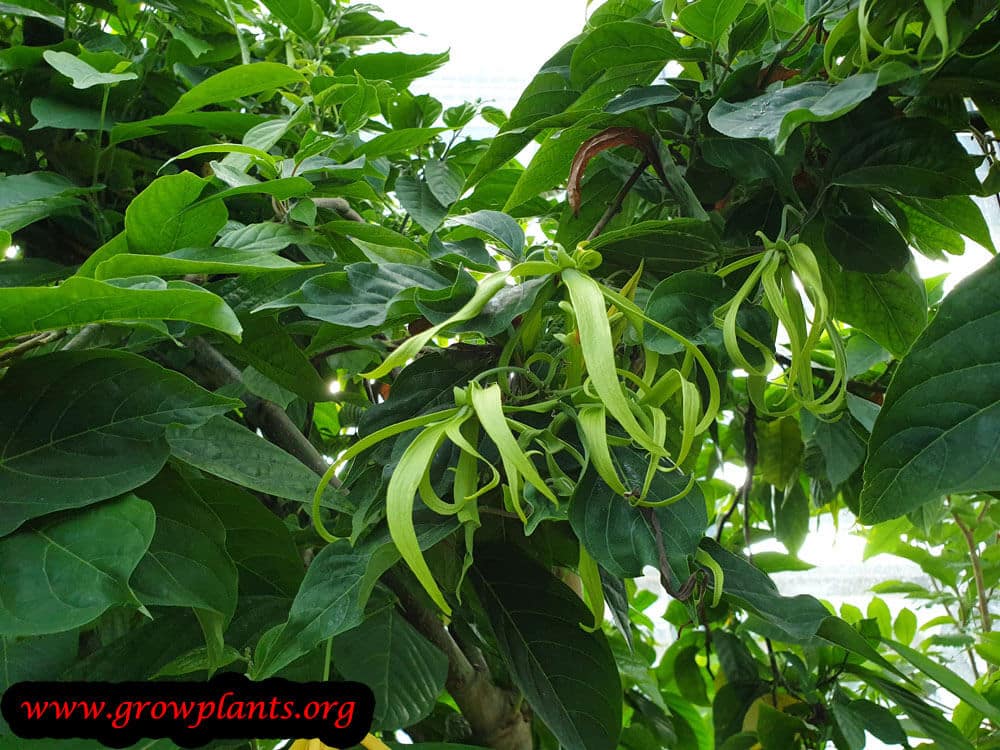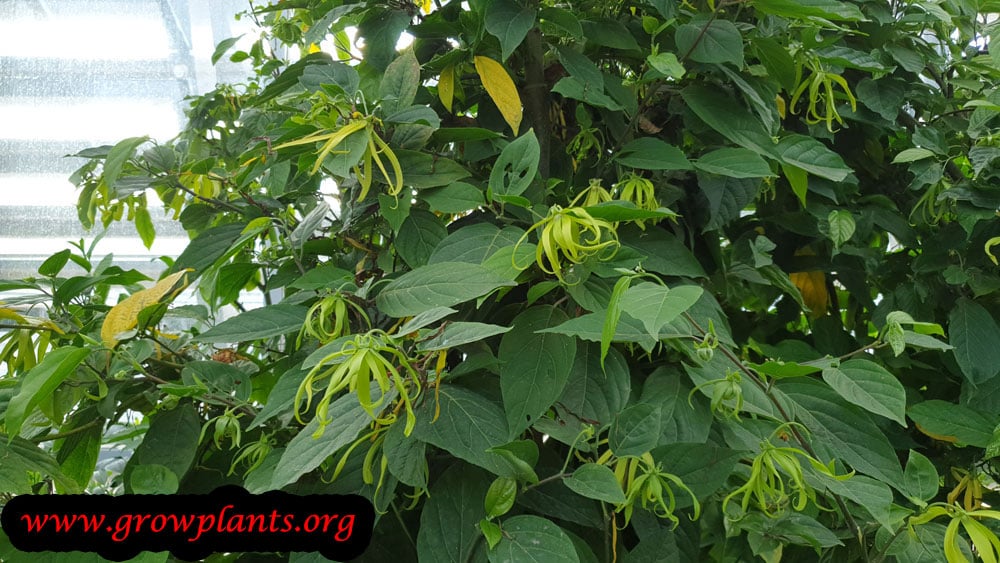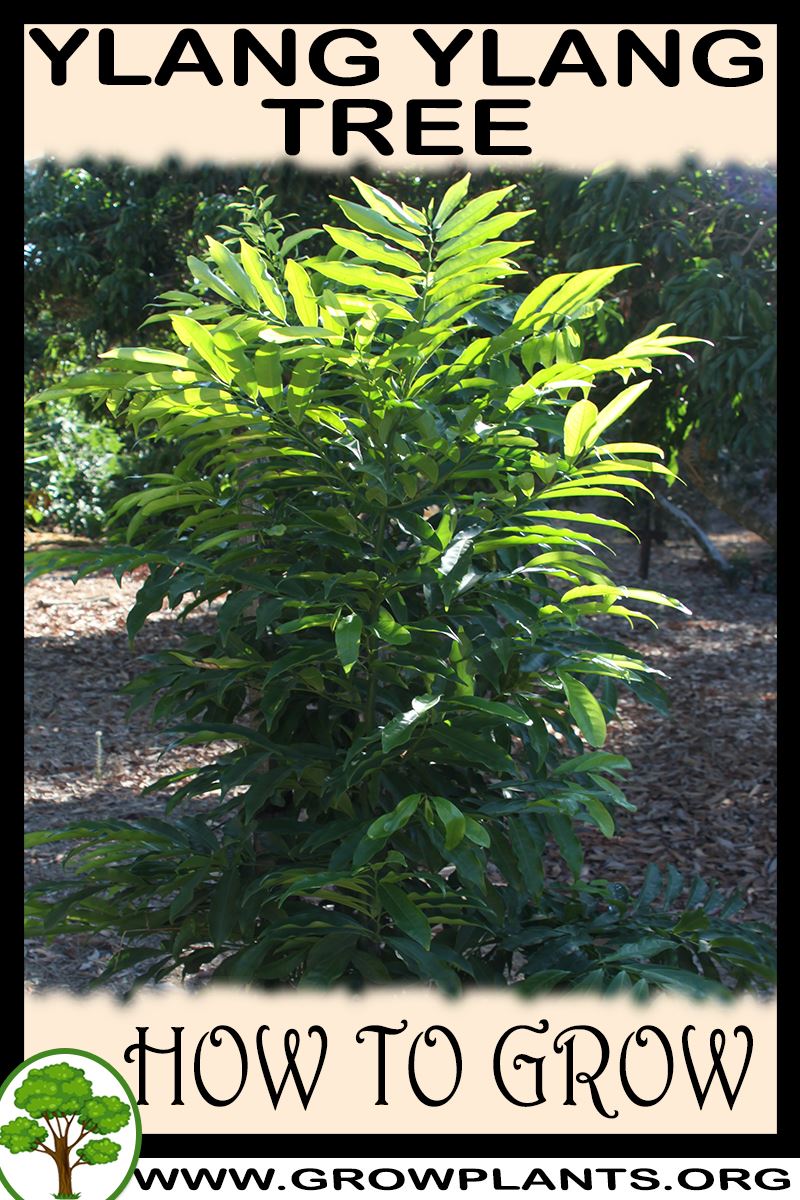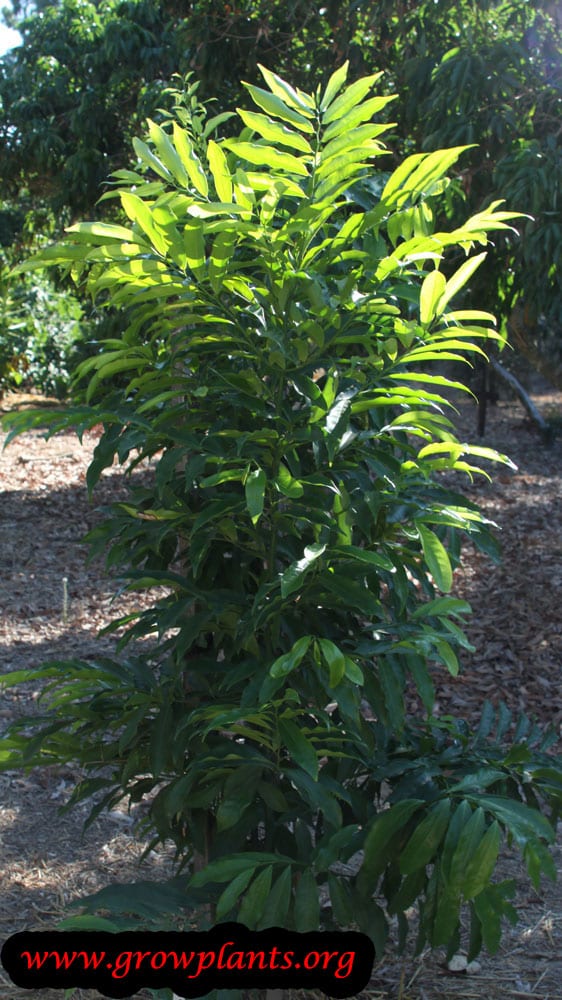
Ylang ylang tree grow and care – tree of the genus Cananga also known as Cananga odorata or Ilang-ilang, Ylang ylang tree perennial evergreen or semi-deciduous plant, mostly used as ornamental plant for the fragrant of the flowers although the fruits are edible, and as bonsai or dwarf and possible to grow it in container, can grow in tropic, subtropical or mediterranean climate and growing in hardiness zone 10b+, possible in hardiness zone 9b-10a with overwinter care.
Leaves color green light to dark in elliptic shape.
Ylang ylang tree flower
Flower showy fragrant the color yellow 6 petals the petal curly, and used for the fragrant.
Fruits edible, the color of the fruit is purple with small seeds inside, the fruits are the size 1-2 cm.
Ylang ylang tree for sale – Seeds or Plants to Buy
How to grow Ylang ylang tree growing condition and care:
More than 5C, high humidity, rich soil, moist soil, cover with mulch, fertilize 3-4 times a year
What is the best way to start growing?
Plant / Seed / Vegetative Reproduction care propagation cutting better to star in the early spring or with temperature of ~26C, requirements: moist soil, high humidity, peat soil, hormone for root growth, highly recommend to use green house (or small plastic box with holes).
Is it necessary to graft or use vegetative reproduction?
No, but it’s hard to start from seeds, but easier to start from air layer
Difficulties or problems when growing:
?
How to plant ylang ylang:
Dig a hole as deep as the current root ball plus extra 20-40%, put in the hole organic matter, hummus and dried leaves and mix it with some soil, put the tree and loos little bit the root ball above the hole, plant the tree and cover it and don’t push the soil too much strong but not too much lightly because it won’t be stable, after this put mulch to keep moist on soil, put water, for the next two weeks put every day (better in the morning) , better to take that the tree will be stable, and if not support it with bamboo or a stick that it won’t fall.
Planting season:
Spring to summer in hardiness zone 9-10a, spring to autumn in hardiness zone 10b-11, all year in hardiness zone 12+
Pests and diseases:
Aphids
Pruning season:
Autumn / winter
How to prune:
Recommend to keep it small easier to pic the flowers
Size of the plant:
5-30m, 15-100 feet, can grow as dwarf and bonsai
Growth speed in optimal condition:
Fast growing / Medium growing
Water requirement:
Average amount of water / Big amount of water
Light conditions in optimal condition for growing:
Full Sun / Half Shade
Is it possible to grow indoor as houseplant?
No
Growing is also possible in a planter /flowerpot / containers:
Yes, when grow in container need to choose the desirable container if it’s small plant it directly if it’s a big container bigger than 30%-50% than the root ball, every time that the tree arrive to full capacity need to switch to bigger until arrives to desirable size, better to switch the soil once in few years soil lose the viability over time and it’s efficient of care for the tree, when it’s not possible to switch all the soil just part of the soil in the side of the roots (don’t afraid from root cutting), it will bear fruits also in 5-10gallon (40 liter) container (but bigger is better), drainage it’s important and need to make holes and to use peat soil and maybe some lava grit in the bottom or something like that, put a bottom for the container and when water the plant let it fill the bottom but also need to dry in the same day, better to grow as dwarf tree or to grow it as bonsai.
Blooming information
Bloom season:
Spring / Summer
General information about the flower
Showy fragrant yellow flower, 6 petals the petal curly
Pollination is done by:
Bees
Edible fruits
Fruit harvest season:
Summer / Autumn
Fruits pests or diseases:
Birds
What can be done with big quantities of Ylang ylang tree fruits?
Jams, cooked, eat raw
Work requirements on the fruit:
Nothing special
How long does it take to bear fruit?
3-4 years
How to grow Ylang ylang seeds
Sowing requirement:
Soak the seeds for 24 hours in little warm water, lightly acid soil
Sowing requirement:
Moist soil, humidity, if there is enough seeds just put them direct in the garden in sunny location keep the soil moist and it will grow
Saving seeds until sowing:
Dry and dark location
Sowing season:
Spring – better in spring but possible also in the summer and in tropical climate possible all year
Planting spacing:
In different pots, or just to through a lot if seeds in hole and choose the better quality
Depth of Sowing:
2-4mm
Conditions for seeds germinate:
Moist soil, high humidity, hot weather (better in green house)
Watering requires for Seeds:
Average to big amount of water, need good drainage and to check when grow in pots not that the soil will be viable
Germination time:
Possible 1 month but 4-8 months until 1 year and even more (2 years after sowing possible that it will germinate)
Condition of seedling:
Full sun, moist soil, watering regular and better humidity
Scientific name:
Cananga odorata






Categories
| Blooming Seasons |
|
|---|---|
| Edible Parts |
|
| Culinary uses |
|
| Flower colors |
|
| Climate |
|
| Harvest Season |
|
| Ornamental parts |
|
| Plant growing speed |
|
| Plant life-form |
|
| Plant Uses |
|
| Planting Season |
|
| Plants sun exposure |
|
| Watering plants |
|
| Hardiness zone |
|



